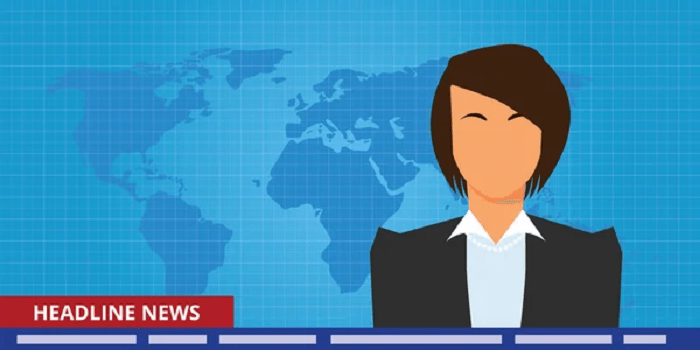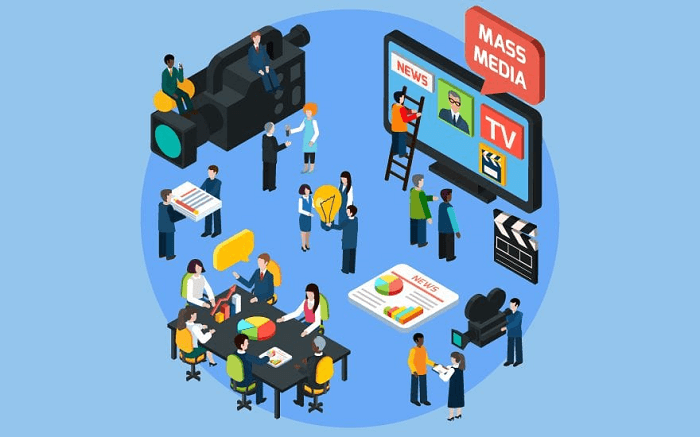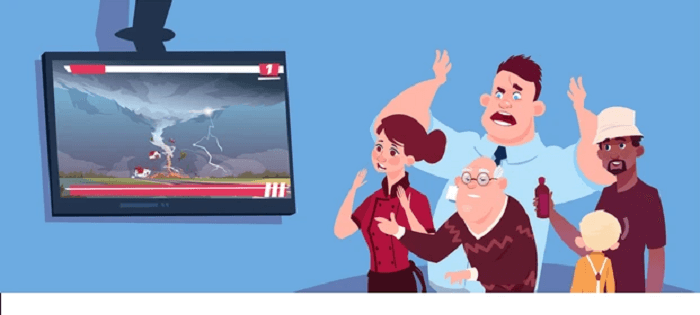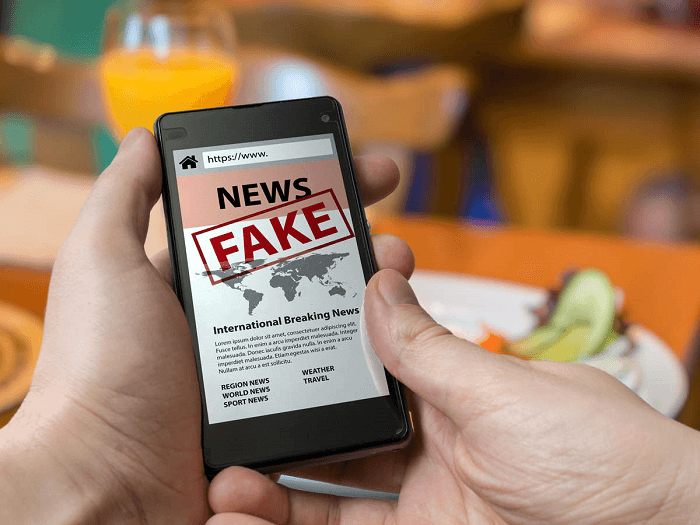Mass Communication DefinitionWhat is Mass Communication?Communicating concurrently with a big group of individuals is known as mass communication. Mass communication has become a crucial component of contemporary society, influencing our daily lives, politics, and culture. Whether through radio, television, newspapers, or the Internet, mass communication can inform, inspire, and unite a large audience. 
The fundamental basis of mass communication involves distributing information to a broad and diverse audience through various mediums to inform, entertain, and educate the public on a wide range of topics, including current events, cultural trends, and societal issues. Although mass communication has existed for ages, it was only in the printing press's development in the 15th century that it took shape. More people than ever before have access to knowledge thanks to the growth of newspapers, magazines, and other written media. The development of radio and television in the 20th century significantly increased mass communication's reach and influence and helped create the conditions for the current digital era. Mass communication is becoming more crucial than ever in the modern society. Thanks to the Internet and social media, sharing information and ideas with the world is simpler than ever. Mass media has also been essential in forming public opinion and affecting political outcomes. Mass communication, in general, is a crucial aspect of contemporary civilization since it gives us the knowledge, entertainment, and education we require to stay informed and engaged with the world around us. The Development of Mass Communication across Time
The oldest examples of human communication, such as petroglyphs and cave paintings, are where mass communication first emerged. However, mass communication only took shape once Johannes Gutenberg created the printing press in the middle of the 15th century. With the invention of the printing press, the mass production of books, newspapers, and other printed materials became a reality. This groundbreaking development enabled the widespread dissemination of knowledge and ideas to a much larger audience than ever before. It marked the dawn of print media, which dominated the realm of mass communication for centuries. In the 19th century, the emergence of the telephone and telegraph profoundly impacted mass communication. These technological advancements revolutionized how news and information were transmitted, allowing real-time delivery across vast distances. As a result, the stage was set for the remarkable growth and influence of radio and television in the 20th century, taking mass communication to new heights. Mass communication underwent another shift in the 1990s with the introduction of the Internet, allowing people to communicate with a global audience via websites, email, and social media. Digital media has exploded, with online news sources, blogs, podcasts, and streaming services growing in popularity. Mass communication has been essential in influencing politics, the public's perception of issues, and the development of culture throughout history. Mass communication has been used to shape public opinion and motivate people toward particular causes for a long time, from the propaganda posters of World War I to the television commercials of recent political campaigns. The future of mass communication is still being determined as technology develops and new media outlets appear. One thing is sure, though: mass media will always be a vital component of contemporary society, influencing our politics, culture, and way of life unfathomably. Recognizing the Mass Communication Elements
Mass communication is a multifaceted process involving many interconnected components to reach a broad audience effectively. These components include the message itself, the source of the message, the chosen communication channel, the intended receiver of the message, and the crucial feedback loop. Together, these elements form the intricate framework of mass communication. Information, an idea, or a position are all examples of the message. It could take the shape of writing, audio, video, or any other type of communication that can reach a large audience. To be effective, the message must be unambiguous, concise, and pertinent to the target audience. The source is the individual or group responsible for the message's creation and distribution. Any institution that needs to communicate with a large audience, such as a news organization, a political campaign, or an advertising agency, could be this. Since the audience is more likely to believe and accept the message if it comes from a credible source, the source should be trusted. The channel is the means of communication. It might be a newspaper, a radio station, a television network, the Internet, or any other medium with a sizable audience. Given that different channels have different advantages and constraints, the channel should suit the message and the target audience. The audience that hears and understands the message is the receiver. It could be a single person, a group, or a large audience. For communication to be effective, the recipient must be able to comprehend the message and relate to it in some way. Feedback is the audience's response to the message to wrap things up. It could take the shape of reviews, ratings, polls, or any other metric for gauging audience participation. Feedback is crucial because it enables the source to assess the success of the message and make necessary adjustments for subsequent communications. In general, compelling and persuasive communications that may reach a broad audience require an understanding of the components of mass communication. Communication professionals can create strategies specific to their audience and objectives by considering the message, source, channel, receiver, and feedback. Mass Communication FormatsA broad word, "mass communication," includes a variety of mediums and platforms. Print, broadcast, digital, and social media are some of the most popular forms of public communication. Print media comprises widely dispersed publications like newspapers, periodicals, books, and other printed products. With the development of the printing press in the fifteenth century, print media has a lengthy history. Although print media has suffered in recent years due to the development of digital media, it still plays a significant role in public communication. Radio and television are examples of broadcast media, which disseminate audio and visual content to a sizable audience. Even with the emergence of digital media, broadcast media has remained the preeminent method of public communication since the early 20th century. Websites, blogs, podcasts, and other online platforms accessible from a computer or mobile device are examples of digital media. With a wide variety of content available and the potential for users to produce and share their content, digital media has skyrocketed in popularity in recent years. Platforms like Facebook, Twitter, and Instagram are social media sites that let users share and interact with material worldwide. Social media has changed the way we engage and communicate with one another and has emerged as a crucial tool for companies, groups, and people to reach their target market. Mass communication has advantages and disadvantages; some messages or target audiences may suit it better. Communicators can create effective strategies suited to their objectives and target audience by being thoroughly aware of mass communication's many forms and distinctive qualities. Mass communication's importance
Mass communication plays a crucial role in our society by making it easier for people to exchange information and ideas globally. It may sway public opinion and impact decision-making while acting as a forceful weapon for education, entertainment, and social change. The ability of mass communication to rapidly and effectively disseminate information to a vast audience is particularly invaluable in emergency scenarios, potentially saving lives and preventing further harm. Mass media also plays a crucial role in education because it gives people access to knowledge and information on various subjects. People can learn about history, science, politics, and other vital topics that shape our world through books, newspapers, documentaries, and other media types. Mass communication is a potent tool for amusement in addition to its significance for education. People can escape the pressures of daily life and immerse themselves in new worlds and experiences through movies, music, television shows, and other media types. Finally, because it has the power to mold public opinion and impact political choices, mass communication can be a force for social change. Through news coverage, films, and other media, people can learn about social and political concerns and participate in insightful debates that result in constructive change. Overall, it is impossible to exaggerate the value of mass communication. It is a pillar of contemporary society, supporting the flow of knowledge and concepts that foster development and expansion. Individuals and organizations can use mass communication's potential to further their objectives and improve the world by comprehending its power. Effects of Mass Media on SocietyMass communication profoundly affects society, influencing how we think, act, and communicate with one another. The following are some significant ways that the media affects society:
Overall, mass communication has a wide-ranging and intricate effect on society. By comprehending its impact, we can choose the media we consume and the messages we convey with more excellent knowledge and endeavor to build a more informed, involved, and connected society. Difficulties with mass communication
Despite its numerous advantages, mass communication faces several difficulties today. Here are some of the main obstacles that mass communication must overcome:
Overall, mass communication faces considerable and intricate obstacles. Mass communication may continue to develop and adapt to audiences' shifting needs and the media landscape by tackling these issues head-on and remaining a potent force for social change, entertainment, and education. The Function of Mass Media in Contemporary Society
Mass communication is crucial in defining how we think, interact, and interact with the world in today's society. Mass communication can impact and inspire us in a variety of ways, from the dissemination of information and ideas to the development of cultural norms and values. Our need for information and education about the world around us is one of the main functions of mass communication. Mass communication, which includes anything from news reporting to documentaries, gives us insightful information and different viewpoints on various subjects, enabling us to comprehend complex problems and make wise judgments. Mass media exerts a profound influence on the shaping of cultural norms and values by introducing novel ideas and perspectives that challenge our preconceived notions and broaden our horizons through mediums such as movies, television shows, and other forms of media, fostering empathy, and facilitating a deeper appreciation for the diverse range of human experiences. Mass communication is also crucial in motivating us to act and make a difference. Mass communication can help us find like-minded people and the skills and resources we need to make a difference by connecting us with them through social media, online groups, and other digital communication channels. In conclusion, mass media has a broad and complex role in contemporary society, spanning everything from entertainment and education to social change and activism. By comprehending the strength and promise of mass communication, we can take advantage of its advantages and seek to build a more informed, involved, and connected society.
Next TopicSimile Definition
|
 For Videos Join Our Youtube Channel: Join Now
For Videos Join Our Youtube Channel: Join Now
Feedback
- Send your Feedback to [email protected]
Help Others, Please Share










